In this section
-
Events
- LinkOnline Webinar Series
- Link Seminars
- NZ Garden Bird Survey
- Biosecurity Bonanza 2024
- Applications of LiDAR: insights from the Hawke’s Bay Regional Council and MWLR partnership programme
- More Birds in the Bush - End of programme event
- Te Tiriti-guided national DNA reference library wānanga series
- Remote sensing webinar series 2023
- Remote sensing webinar series 2022
- Fieldays 2023
- Fieldays 2022
- Molecular biology
- E Tipu - Boma Agri Summit
- TechWeek 2019
- Conservation Week Livestreams
- Kia Manawaroa Kia Puawai: Enduring Māori Livelihoods webinar
- Kōrero: Resource Management reforms
- STEMFEST 2023
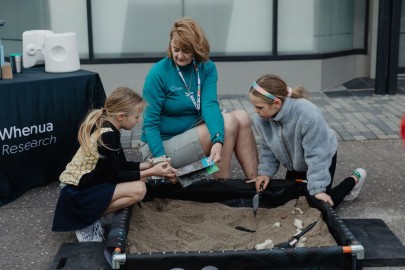
Manaaki Whenua staff member showing visitors to our stand at STEMFEST what they uncovered in the sandpit.
Children were able to become scientists for the day and use their tool kits to carefully uncover a range of fossils including 3D printed replicas of bones and coprolites (fossilised poo) from moa and kākāpo.
Once our future scientists found a fossil, they had to follow the same process that our palaeoecologists follow in the field (examining, photographing, and measuring finds before bagging for further investigation) – and all this was undertaken in appropriate PPE!
We were able to share how we process ancient DNA and the importance of understanding past ecosystems to inform future conservation efforts through a range of visual flip cards.
Launching this STEM activity with over 400 children in Tauranga was a huge success and backed with the knowledge and expertise from Manaaki Whenua palaeoecologists who work in our Long-Term Ecology Lab.
Dating kiore's arrival in Aotearoa
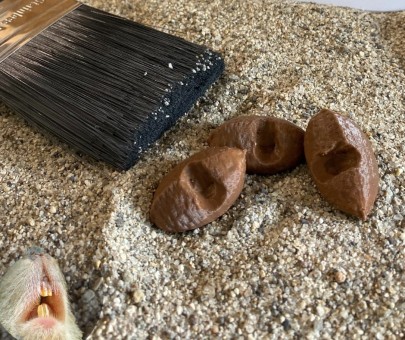
Woody seeds found across Aotearoa New Zealand in peat swamps with mysterious holes in the side.
One of the smaller items children could uncover were replicas of woody seeds, which have some mysterious holes in their sides. This native woody seed was one of just over a hundred found in peat and swamp sites across Aotearoa New Zealand that showed tooth-marks. All rodents, including the kiore or Pacific rat, have a single pair of continuously growing incisors (front teeth) in each of the upper and lower jaws. The width of the tooth-marks left on these seeds exactly match a kiore’s two front teeth. These cannot be mistaken for any other predator in New Zealand - even other kinds of rats.
Radiocarbon dating involves measuring carbon-14 - a radioactive isotope formed in the atmosphere by cosmic rays. Carbon-14 is absorbed by living organisms into their tissues. When they die, the absorption stops and the carbon-14 decays at a known rate. The age of the seeds can be estimated by measuring how much carbon-14 is left. By radiocarbon dating seeds that have gnaw marks from different sites across New Zealand, we know that kiore began munching their way through the forests from around 1280 AD - that's 740 years ago.
Kākāpō what?
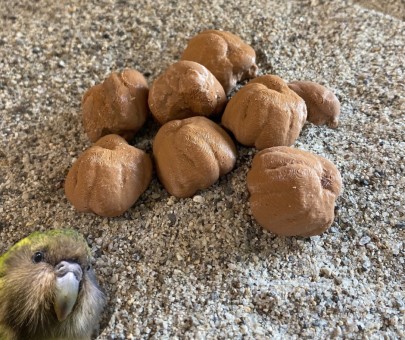
What else did we uncover in our fossil sandpit? Some children guessed that they looked like mini brains, while others thought they had come from a plant…
Would you be surprised to learn that these are coprolites (fossilised poo) from a kākāpō? These fossils are called trace fossils, as they are not part of an animal’s actual body (unlike their bones). Coprolites can tell scientists what foods an animal ate and where they lived.
Kākāpō coprolites
Kākāpō are the world’s only flightless parrot. They are also the world’s heaviest parrot. They are only found in Aotearoa New Zealand. Because kākāpō don’t fly, they are easy targets for predators. Kākāpō also reproduce very slowly. They need the fruit of rimu trees to breed, and these flowering events only happen every two to five years. Kākāpō are a critically endangered species. In August 2023 there were only 248 kākāpō, and they are all known individuals.
Using ancient DNA and microscope techniques, scientists have investigated what kākāpō were eating in ancient Aotearoa New Zealand. Manaaki Whenua researchers found that in the past, kākāpō were eating about twice as many types of plants as they do today. This information can help us figure out where would make the best new homes for kākāpō as we help bring them back from the brink of extinction.
Understanding an extinct bird
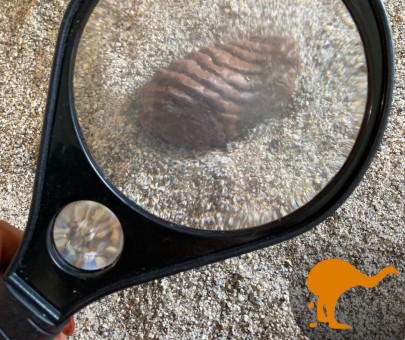
Moa coprolite
This coprolite (fossilised poo) is from a much larger bird than a kākāpō, though they did inhabit New Zealand at the same time…. The moa.
Moa were flightless birds endemic to Aotearoa New Zealand. Endemic means they were only found here. Moa went extinct between 1400 and 1500 AD as a result of hunting by humans and changes in their habitat.
Some of the oldest moa coprolites we’ve found are about 8,000 years old, while some of the youngest are 600 years old. We find them in dry nooks and crannies of caves or under rocky overhangs. These are places that would have provided shelter for the birds from the weather and the fearsome aerial predator, the Haast eagle.
After our researchers find the coprolites, they take them back to their laboratory and carefully remove small samples from them. These samples are then broken down to release pure DNA, or into small pieces that can be looked at under a microscope.
What researchers found in this coprolite showed moa ate a wide range of plant species, including leaves of trees, ferns and mosses, as well as mushrooms – a strictly herbivorous diet. While moa cannot come back from extinction, it is important to understand how they interacted with the environment before humans arrived in New Zealand.
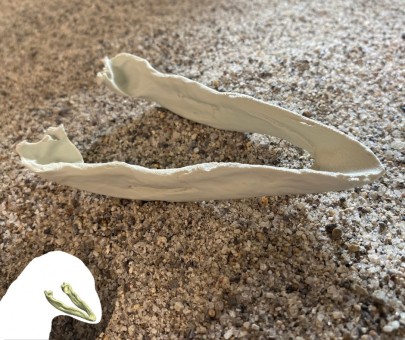
Moa lower jaw bone
As we continue our fossil hunt expedition, the next fossil uncovered in the sandpit is the lower jaw bone from a moa.
Using 3D scanning to create models of the skulls, researchers can tell how the different species used their beaks to eat.
The shape and thickness of the bone, and the way muscles connected to the skull and beak, show the different ways each moa could use their beak.
Some species were choppers, some pulled and twisted the plants to get their food, while others had beaks that were good for cutting.
Different moa had different eating styles and different diets:
- Bush moa ate forest vegetation, including the nutritious leaves of the tasty red mistletoe.
- The stout-legged moa had a broader, weaker bill suitable for plucking soft plants and fallen fruit.
- Giant moa were generalist feeders that browsed across a range of habitats. They also swallowed stones that stayed in their gizzard (stomach) and helped grind up the seeds, berries and twigs they ate.
The skulls of moa show large olfactory (nose) chambers, which suggests moa had a good sense of smell.
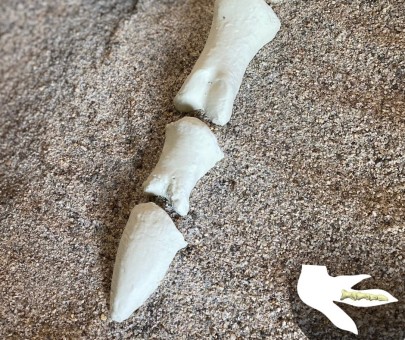
Moa toe bones
The last fossil on our journey was a favourite at STEMFEST. This fossil is made up of 4 bones and our future scientists loved trying to put these pieces together and guess which feathery friend they are from.
This is a toe from a moa. Moa had three front-facing toes on each foot, and a small rear toe, often just a spur on the leg. The moa foot is also distinctive because the tarsus (the scaly part of the leg to which the toes are attached) was very short.
Some moa had quite short legs. In the heavy-footed moa, the breast feathers were barely off the ground. All moa nested on the ground, so the toes could have been used to pull clipped twigs, stripped bark and coarse vegetation into a nest.
The different sizes of moa bones, including their toes, have helped scientists identify the height and weight of the different moa species. The smallest species of moa were the little bush moa, upland moa, and Mantell’s moa, which were not much larger than turkeys. Bigger than these were the stout-legged, crested, eastern, and heavy-footed moa. The largest of all moa were the two species of giant moa, which could weigh more than 200 kg and stand over 2 metres tall.
